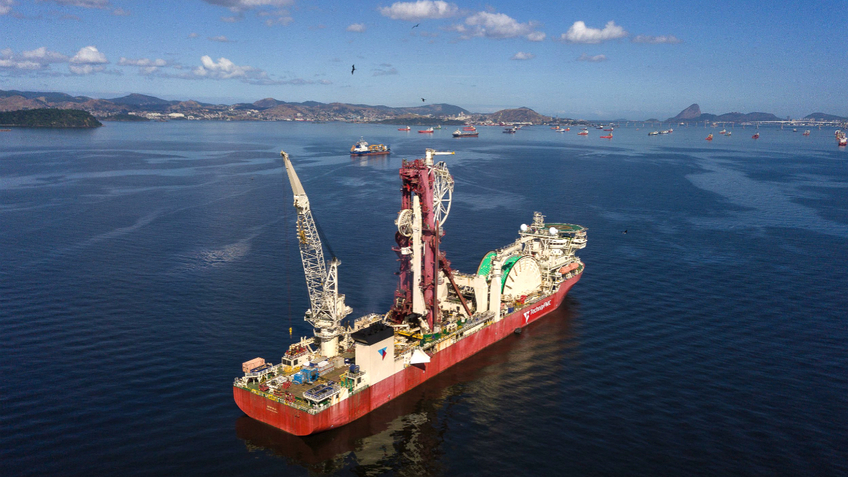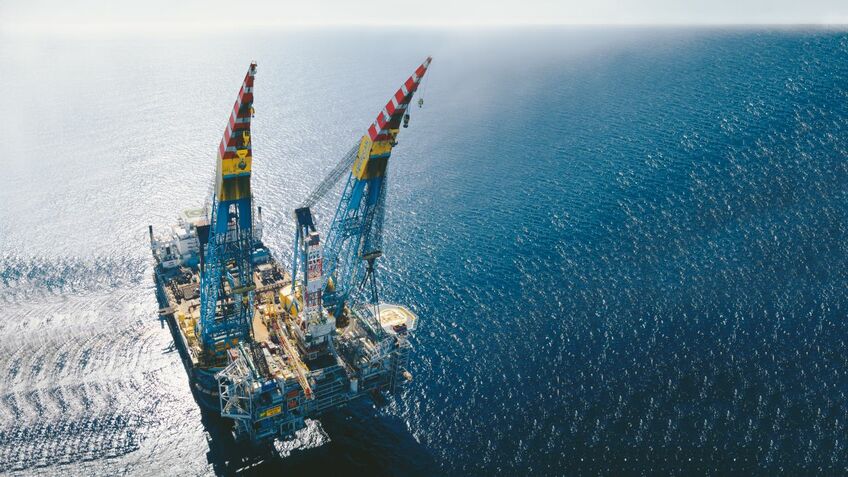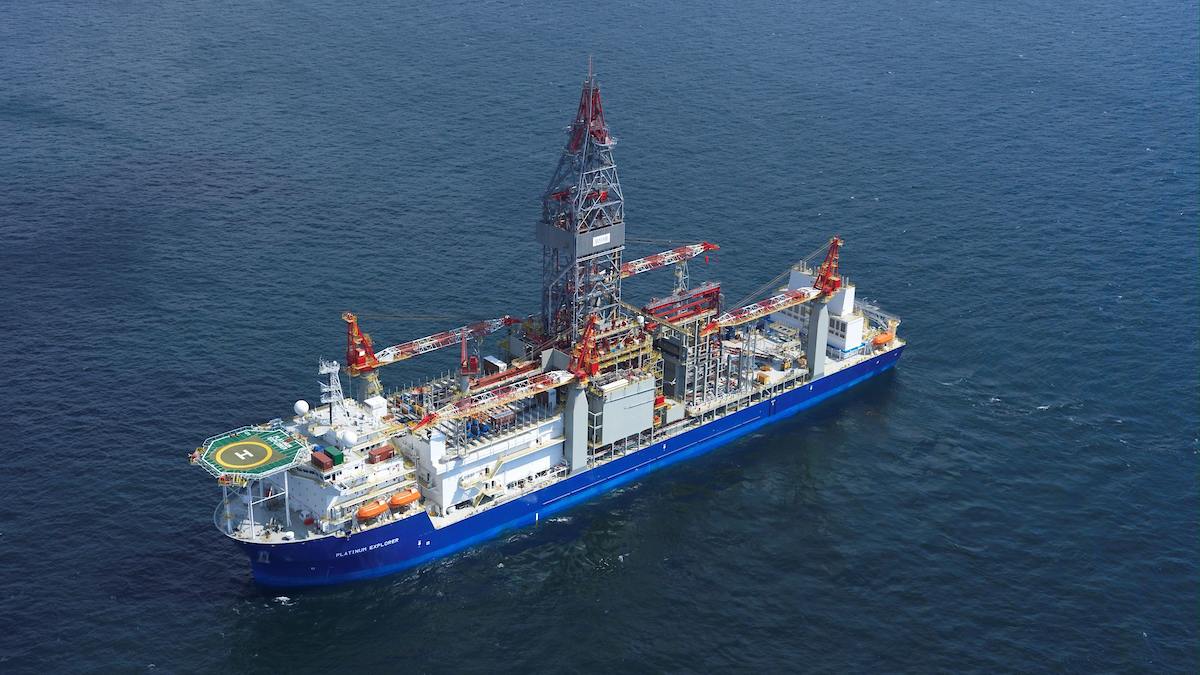Business Sectors
Events
Contents
Dockwise completes first float-over on DP
A dynamic positioning (DP) float-over occurs when a heavy-lift vessel installs the topside on a platform whilst in DP mode. Firstly, the topside is secured on the vessel. Then, it is placed on top of pre-set platform legs (the jacket) by manoeuvring the vessel into position using dynamic positioning. The vessel is then held in place utilising a DP joystick in order to keep it firm against the legs of the jacket. The vessel is then ballasted to allow the topside to sit on top of the legs. Once the topside is clear of the deck, the vessel then manoeuvres out and clear.
Alternative methods can use barges, which require tugs and sometimes complex anchor patterns, or the use of heavy-lift cranes, which can be limited for larger topsides. The feasibility for float-overs using vessels in DP mode has increased considerably in the last few years, although there are a limited number of heavy-lift vessels able to perform the operation. It is, however, a cost-effective alternative to the conventional mooring-assisted float-overs. The additional advantages are relatively high speed transports, and the shorter exposure time means less probability for the environment to pose a threat to safety. A float-over performed in DP by a single vessel makes such an operation attractive.
Dockwise’s first float-over in DP mode was undertaken in co-operation with experts from ADPS Ltd in the UK, using the heavy-lift vessel Hai Yang Shi You 278 (HYSY278). Asked about ADPS’s involvement in DP float-overs, Captain Lee Brown, technical director of ADPS, noted that the Dockwise project was not the first time ADPS has played a part in a float-over operation that was completed using DP. “As far back as 2003, we were consulted on the feasibility of the Talisman Bunga Raya topside being installed in DP. From planning to execution, we offered our expertise ensuring that this was the first installation of a topside in DP,” he told OSJ.
The purpose of the float-over was to install a 15,748-tonne CKX booster compression facility for Carigali Hess in Block A-18 of the Malaysia-Thailand Joint Development Area. Block A-18 is located approximately 150km northeast of Kota Bahru (Malaysia) in approximately 60m of water. HHI contracted Dockwise for the transport and installation of the topside due to its longstanding experience in projects of this magnitude.
ADPS worked closely in collaboration with Dockwise, providing extremely experienced DP consultants to undertake the DP float-over. ADPS claims to be the only company that performs float-overs utilising the DP method and has now successfully completed 13 DP float-overs. The company was involved in the planning of the project at an early stage. Its project team, all masters with considerable experience of DP, worked closely with Dockwise, giving the company sufficient confidence to undertake its first DP float-over.
Fenders had been constructed on the jacket to allow for the forces of the vessel passing through the jacket. This meant that, when approaching in DP, there was no room for error. The approach speed was very slow to allow for changes in alignment. Good seamanship together with good DP practice was vital. This particular project allowed for a total of 200mm clearance for a vessel with a beam of 42m. Once in position, Captain Mike King, DP commander for the project, used the DP joystick to provide the optimum amount of thrust to maintain position while the sea fastenings were cut and the ballasting crew did their job.
Captain Brown noted that conducting the operation in DP mode allowed for significant savings to be made without impinging on the safety and speed of the operation whilst also ensuring that competency issues were addressed. “This was the 13th operation carried out using this technique, all carried out with assistance from ADPS, and the operation was a resounding success thanks to all involved,” he concluded.
Related to this Story
Events
Maritime Environmental Protection Webinar Week
Cyber & Vessel Security Webinar Week
The illusion of safety: what we're getting wrong about crews, tech, and fatigue
Responsible Ship Recycling Forum 2025
© 2024 Riviera Maritime Media Ltd.












